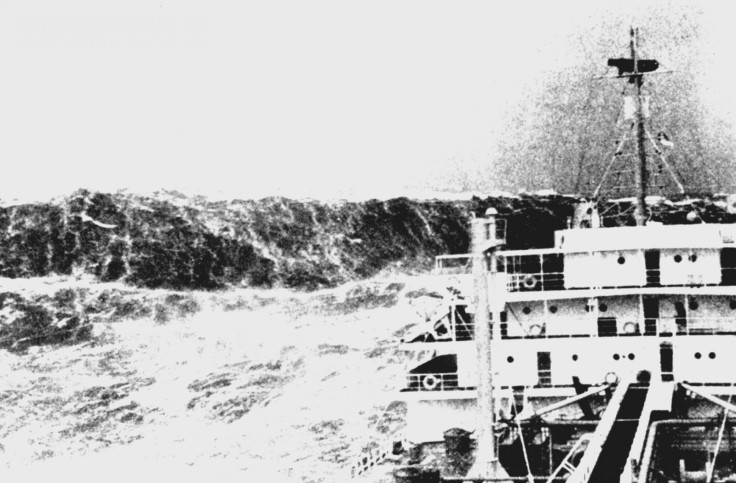How sudden winds whip up deadly rogue ocean waves
'Freak' waves are actually very common.
Rogue ocean waves – also known as freak waves – have been recreated in the lab using a large circular wave tank, revealing how they are created by changing winds.
Rogue waves can be dangerous in causing damage to ships and oil rigs. These dangerous phenomena are surprisingly common, but exactly what causes rogue ocean waves is not yet clear.
Scientists at the University of East Anglia in the UK used a large circular wave tank to study how rogue waves can be generated in the laboratory. Most lab-based experiments on rogue waves use long rectangular tanks to try to find the conditions necessary to make rogues. But the ends of the tank affect how often the rogue waves form.
Using a circular tank is mathematically equivalent to a rectangular tank that is infinitely long, the researchers say. This allowed them to simulate how the waves form in more realistic conditions closer to those of the open oceans.
They found that when they switched their wind machine on, it created an erratic wave field. The wave height gradually grew, and this was when rogue waves tended to form. Once the waves had reached their maximum height for that wind speed, rogues became less common.
"Despite a great effort made in recent decades the complete understanding of the formation of these extreme events remains elusive from the mathematical and physical point of view," said study author Davide Proment in a statement.
"The particular geometry of the flume allowed us for the first time to create waves propagating circularly and continually – an 'unlimited-fetch' condition. Similar physical conditions actually appear in reality around the Antarctic continent where strong winds blow and seas states are notoriously extreme."

The scientists find that the probability of rogue waves happening is much greater than previously estimated.
Rogue waves can cause damage to ships and other structures out at sea, and also buildings at the coast. Historic cases of lighthouses being damaged or even mysteriously disappearing entirely in the 19th and early 20th centuries have been attributed to rogue waves, some said to have reached more than 33 metres high. However, the steepest rogue wave ever recorded with scientific instruments occurred in the North Sea, reaching 21 metres high.
The research is published in the journal Physical Review Letters.
© Copyright IBTimes 2025. All rights reserved.






















